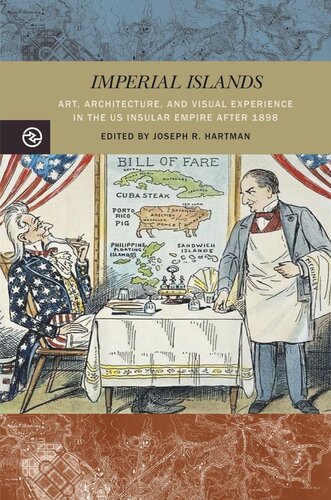

Most ebook files are in PDF format, so you can easily read them using various software such as Foxit Reader or directly on the Google Chrome browser.
Some ebook files are released by publishers in other formats such as .awz, .mobi, .epub, .fb2, etc. You may need to install specific software to read these formats on mobile/PC, such as Calibre.
Please read the tutorial at this link: https://ebookbell.com/faq
We offer FREE conversion to the popular formats you request; however, this may take some time. Therefore, right after payment, please email us, and we will try to provide the service as quickly as possible.
For some exceptional file formats or broken links (if any), please refrain from opening any disputes. Instead, email us first, and we will try to assist within a maximum of 6 hours.
EbookBell Team

4.8
94 reviewsWhen the USS Maine mysteriously exploded in Havana’s harbor on February 15, 1898, the United States joined local rebel forces to avenge the Maine and “liberate” Cuba from the Spanish empire. “Remember the Maine! To Hell with Spain!” so went the popular slogan. Little did the Cubans know that the United States was not going to give them freedom—in less than a year the American flag replaced the Spanish flag over the various island colonies of Cuba, Guam, Puerto Rico, and the Philippines. Spurred by military successes and dreams of an island empire, the US annexed Hawai‘i that same year, even establishing island colonies throughout Micronesia and the Antilles.
With the new governmental orders of creating new art, architecture, monuments, and infrastructure from the United States, the island cultures of the Caribbean and Pacific were now caught in a strategic scope of a growing imperial power. These spatial and visual objects created a visible confrontation between local indigenous, African, Asian, Spanish and US imperial expressions. These material and visual histories often go unacknowledged, but serve as uncomplicated “proof” for the visible confrontation between the US and the new island territories. The essays in this volume contribute to an important art-historical, visual cultural, architectural, and materialist critique of a growing body of scholarship on the US Empire and the War of 1898.
Imperial Islands seeks to reimagine the history and cultural politics of art, architecture, and visual experience in the US insular context. The authors of this volume propose a new direction of visual culture and spatial experience through nuanced terrains for writing, envisioning, and revising US-American, Caribbean, and Pacific histories. These original essays address the role of art and architecture in expressions of state power; racialized and gendered representations of the United States and its island colonies; and forms of resistance to US cultural presence. Featuring truly interdisciplinary approaches, Imperial Islands offers readers a new way of learning the ongoing significance of vision and experience in the US Empire today, particularly for Caribbean, Latinx, Philipinx, and Pacific Island communities.